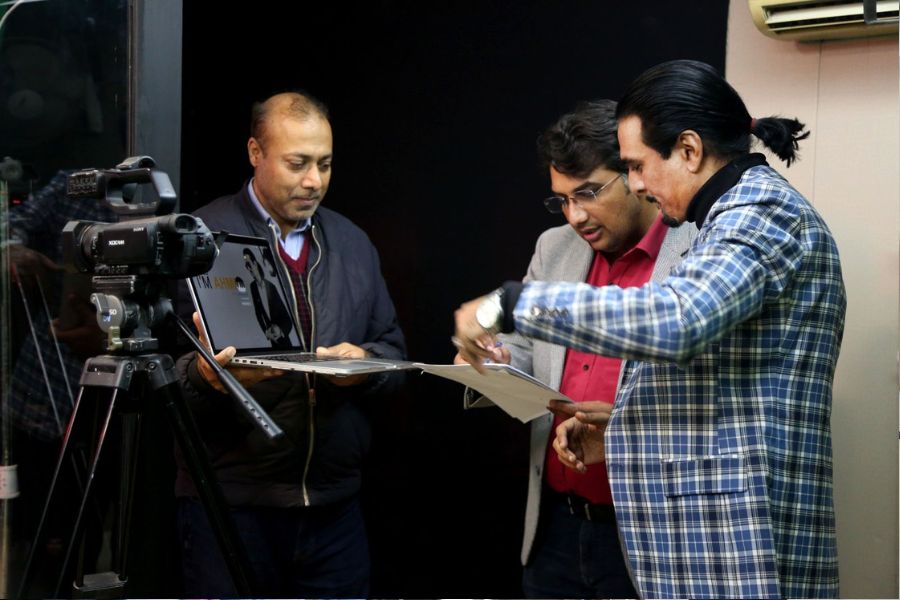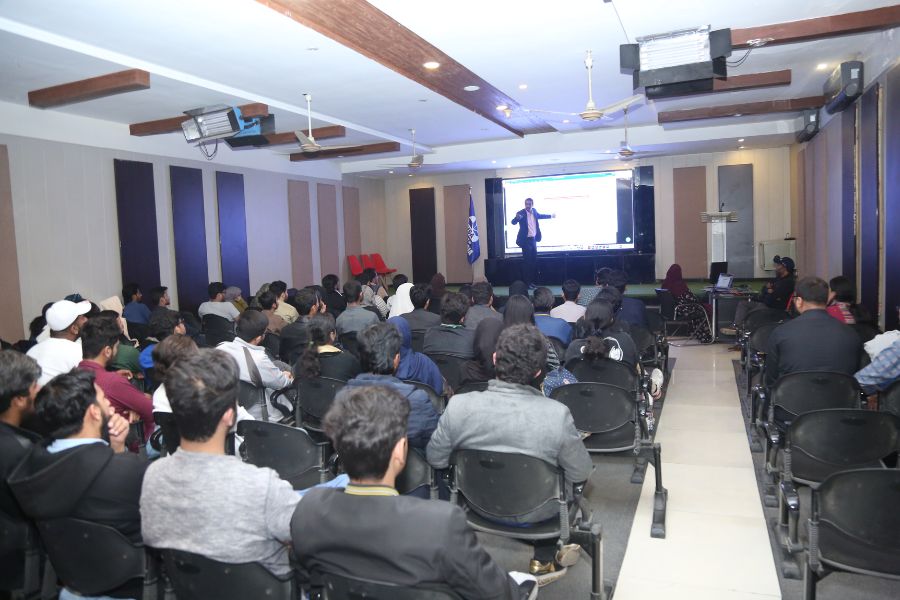Table of Contents
Introduction
Greetings, fellow filmmakers and storytelling aficionados! I am Ahmed Afridi a filmmaker, and I am absolutely thrilled to be sharing with you today Practical Guide to Storytelling in Film 2024. This guide is not just another compilation of techniques; it’s a culmination of my years of passion, experience, and insights in the world of cinema. Whether you’re embarking on your filmmaking journey or seeking to refine your craft, my aim is to equip you with practical advice and strategies to elevate your storytelling prowess and captivate audiences like never before.
Chapter 1: Embracing the Essence of Storytelling

Let’s dive into the very soul of filmmaking – storytelling. From ancient tales passed down through generations to modern blockbusters, storytelling has always been the heartbeat of cinema. In this chapter, we’ll unravel the profound impact of storytelling on filmmaking, delving into its roots and contemporary significance. Understanding the essence of narrative will empower you to craft stories that not only entertain but also leave a lasting imprint on your audience’s hearts and minds.
Roots of Storytelling in Film:
Explore how early filmmakers like Georges Méliès and the Lumière Brothers laid the groundwork for storytelling in film. Brief History of Filmmaking.
Study the evolution of storytelling techniques from silent films to the talkies era and beyond. Timeline of Film History.
Contemporary Significance of Storytelling:
Analyze how modern filmmakers incorporate storytelling elements to engage and captivate audiences. Article On Storytelling Techniques In Modern Cinema.
Learn from the success stories of recent blockbuster films that have effectively utilized storytelling to leave a lasting impact. Analysis Of Storytelling In Recent Blockbusters.
Crafting Memorable Stories:
Discover practical tips and techniques for crafting compelling narratives that resonate with audiences. Guide On Crafting Memorable Stories.
Learn from renowned filmmakers and screenwriters who share their insights on the art of storytelling. Interviews with Filmmakers on Storytelling.
Chapter 2: Breathing Life into Characters
Characters are not merely words on a script; they are the lifeblood of your story. In this chapter, I’ll guide you through the intricate art of character creation, drawing upon techniques honed through countless hours of filmmaking. Together, we’ll learn how to craft characters that leap off the screen and into the hearts of your audience, imbuing your stories with authenticity, depth, and resonance.
Character Profiles: Creating detailed profiles for your characters can help bring them to life. Include aspects such as their background, personality traits, motivations, fears, and desires.
Character Development Exercises: Engage in exercises to flesh out your characters further. This could involve writing scenes from their past, conducting interviews with them, or exploring their daily routines.
Character Arcs: Characters should undergo change or growth throughout the story. Understanding character arcs is crucial. Here’s an article explaining different types of character arcs: Understanding Character Arcs.
Dialogue Writing: Dialogue is a powerful tool for revealing character traits and advancing the plot. Learn how to write authentic and compelling dialogue: Writing Effective Dialogue.
Visualizing Characters: Consider creating visual aids such as mood boards or character sketches to help you visualize your characters. Pinterest is a great platform for collecting visual inspiration.
Character Motivations: Understanding what drives your characters is essential for creating authentic performances.
Feedback and Revision: Share your character sketches and story ideas with others to gather feedback. Receiving constructive criticism can help you refine your characters and storyline. Consider joining online writing communities or workshops for peer review. For example, you can try the subreddit Screenwriting for feedback and discussions.
Chapter 3: Building the Foundation: Story Structure

Every masterpiece begins with a solid foundation, and filmmaking is no exception. In this chapter, we’ll explore the cornerstone of great films – story structure. Whether you’re drawn to the timeless elegance of the three-act structure or the bold experimentation of nonlinear storytelling, mastering story structure will empower you to engage and enthrall your audience from the opening scene to the closing credits.
Three-Act Structure (The Classic Choice): This is the most widely used structure, dividing the story into three acts:
Act 1: Setup (Introduction): Introduce the characters, setting, and central conflict.
Act 2: Confrontation (Rising Action): Raise the stakes, introduce complications, and build towards the climax.
Act 3: Resolution (Falling Action): Resolve the main conflict, and provide closure for the characters and story.
Example: “The Lord of the Rings” trilogy is a classic example of the three-act structure.
Story beats: Within each act, identify key story beats that move the plot forward and keep the audience engaged. These can be turning points, revelations, or moments of high tension.
Pacing is crucial: A well-paced story balances exposition, character development, and action to keep the audience invested.
Chapter 4: Painting with Light and Shadow: Visual Storytelling
As filmmakers, we possess a unique canvas – the screen. In this chapter, we’ll unravel the art of visual storytelling, exploring the interplay of composition, lighting, and cinematography in conveying meaning and evoking emotion. From framing the perfect shot to harnessing the power of color symbolism, you’ll learn how to create visuals that speak volumes and resonate with your audience on a visceral level.
Visual elements
Composition: How you arrange elements within the frame. A balanced composition creates a sense of order, while an unbalanced one can evoke tension or unease.
Lighting: Sets the mood, creates depth, and highlights specific elements. Low lighting can create a sense of mystery, while high-key lighting creates a bright and sterile atmosphere.
Cinematography: The art of camera movement and shot selection. Close-ups can convey intimacy, while wide shots can establish setting or overwhelming emotions.
Chapter 5: Dialogue, Sound, and Atmosphere

Dialogue and sound design are the unsung heroes of storytelling, breathing life into your narrative and immersing audiences in your world. In this chapter, I’ll share techniques for crafting authentic dialogue, utilizing sound effects and music to set the mood, and creating an immersive sonic experience that enhances the emotional impact of your film.
Sound and dialogue are vital tools for filmmakers, shaping emotions and drawing viewers into the story.
Dialogue:
Authentic Conversations: Reflect characters’ traits and relationships naturally.
Subtext: Add depth with what’s left unsaid.
Silence: Powerful for tension and resonance.
Sound Design and Music:
Sound Effects: Bring realism and immersion.
Music: Sets mood and enhances emotions.
Creating Atmosphere:
Combine dialogue, sound, and music for a unique atmosphere.
Examples:
“The Big Lebowski”: Witty dialogue reflects characters.
“Psycho”: Screeching violins induce terror.
“Star Wars”: John Williams’ score adds epic adventure.”
Chapter 6: Sculpting the Narrative: Editing and Post-Production
Editing is where the magic truly happens, transforming raw footage into a cohesive and compelling story. In this chapter, we’ll explore the art of film editing, from pacing and rhythm to the seamless integration of visual effects and post-production techniques. By mastering the editing process, you’ll have the power to shape your story and engage your audience on a deeper level.
The Power of Editing:
Pacing and Rhythm: Editing controls the speed and flow of your film. A skilled editor can create a sense of urgency, build suspense, or slow down for emotional moments.
Shot Selection and Sequence: The order and type of shots used can dramatically impact the story’s impact. Editors carefully choose shots to guide the audience’s eye and tell the story visually.
Visual Effects (VFX) and Post-Production Techniques: Modern editing software allows for seamless integration of VFX, color correction, and other post-production techniques. These tools can enhance the visual spectacle of your film and create believable fantastical elements.
Chapter 7: Forging Connections: Engaging with Your Audience

At the heart of every great film lies a connection forged between the storyteller and the audience. In this final chapter, we’ll discuss strategies for building empathy, eliciting emotional responses, and sparking meaningful dialogue with your viewers. By understanding your audience and actively engaging with them, you’ll create stories that resonate long after the credits have rolled.
Building Empathy:
Relatable Characters: Craft characters with flaws, desires, and struggles that viewers can identify with.
Emotional Journeys: Take your characters on a compelling emotional journey, allowing the audience to experience their joys, fears, and triumphs alongside them.
Eliciting Emotional Responses:
Utilize Storytelling Techniques: Suspense, humor, conflict, and resolution are all tools that can be used to evoke a range of emotions in your viewers.
Visual Storytelling: Don’t underestimate the power of visuals. Cinematography, editing, and mise-en-scene can all be used to create a powerful emotional impact.
Sparking Dialogue:
Pose Questions: Leave your audience with something to think about after the credits roll. A thought-provoking film can spark conversations and debates, fostering a deeper connection with the story.
Embrace Multiple Interpretations: Not every viewer will take away the same meaning from your film. Embrace the beauty of open-ended stories that allow for individual interpretations.
Conclusion:
A Practical Guide to Storytelling is more than just a manual; it’s a roadmap to unleashing your creative potential and crafting stories that leave a lasting impact. With the knowledge and insights shared in this guide, you’ll be equipped to embark on your storytelling journey with confidence, passion, and purpose. So, my fellow filmmakers, let’s pick up our cameras, ignite our imaginations, and together, let’s weave cinematic magic that transcends time and touches the soul.

